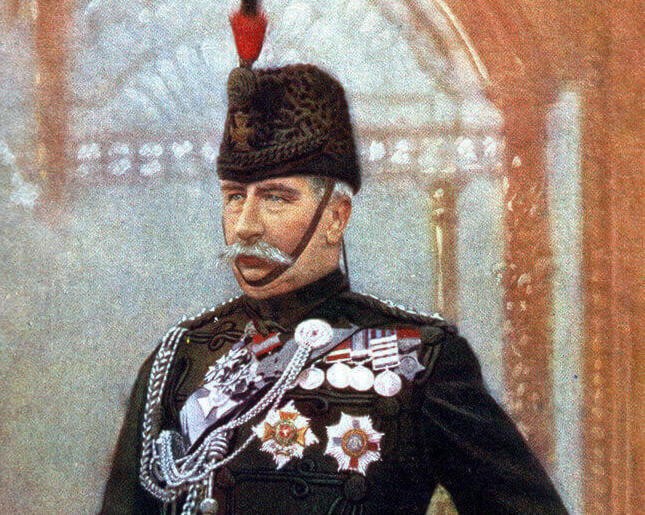Jesse Bixby Special to the Chronicle
This week is Heritage Week across B.C., and communities around the province are educating the public on their history.
One quirk of Ladysmith’s rich history is celebrated on some of its oldest streets.
Named by James Dunsmuir after famous figures of the Boer War (1899-1902), Ladysmith street names are seemingly innocent but have great stories behind them.
Robert Baden-Powell best known for his role as the guiding light behind the Boy Scouts, Baden-Powell also oversaw the organization of the Legion of Frontiersmen in the Second Boer War. While arranging the Legion, he was trapped in the Seige of Mafeking and was surrounded by a Boer army for 217 days. It was under Baden-Powell’s command they endured the siege as long as they did, and when the siege was lifted on May 16, 1900, he became a national hero.
Redvers Buller entered the Boer War as commander of the Natal field force. His troops saw many defeats and he was replaced as commander in 1900 by Lord Roberts. His poor leadership abilities earned him the nickname “Reverse Buller” among troops. Buller was demoted to second in command, but it was his troops that were successful in the Battle of Tugela Heights and lifted the siege.
Frederick Roberts was the one of the most successful commanders of the 19th century. He was commander of British troops during the Second Boer War, who won victory. Upon his return to England, he was made a Knight of the Garter and an Earl. In 1914, while visiting Indian troops fighting in WWI, Roberts got extremely ill and died of pneumonia. A state funeral was held for him, which were only normally reserved for Royals. He is buried in St. Paul’s Cathedral.
Horatio Kitchener was Chief of Staff in the Boer War. He succeeded Roberts as commander-in-chief, and is known for his scorched earth policy campaign against the Boers, which consisted of burning their farms and killing their livestock. He helped establish concentration camps for women, children, and the elderly. The war ended when the Treaty of Vereeniging was signed in 1902. He died on June 15, 1916 while on a mission to Russia when his vessel struck a German mine. His body was never found.
Paul Sanford Methuen was in command of the 1st Division as Lieutenant-General in 1899. He is remembered for his grave defeat at the Battle of Magersfontein, where his artillery assaulted the wrong place and resulted in substantial casualties. Muethuen was captured by the Boers in 1902 and was wounded with a broken leg, but was released by the Boer General Koos de la Rey because of his injuries. The two men allegedly bonded over Rey’s decision to set him free and they became lifelong friends. He was widely respected and later helped raise the British Expeditionary Force’s standards of training.
Charles Warren helped conduct the first major excavations of Jerusalem in 1867. He later became Chief Instructor in Surveying at the School of Military Engineering in England, but was sent to Sinai to check up on an archaeological expedition. Warren discovered the archeologists had been murdered and looted. He brought the killers to justice and was rewarded by being elected as a Fellow of the Royal Society. He was also made Commissioner of Police of London and tried to help, unsuccessfully, to find the notorious Jack the Ripper killer. He returned to the military and was in command of the 5th Division of the South African Field Force in the Boer War. Later in life, he helped Baden-Powell create the Boy Scout movement.
John French was only two years old when his father died. His mother was moved to a mental home after his death. During the Boer War, French became a national hero as he commanded the troops that relieved the Siege of Kimberly and won the Battle of Elandslaagte near Ladysmith. After the war, he returned to England and was made Inspector-General of the Army.
*****
To learn more about Ladysmith’s heritage, check out “The Tie That Binds,” the new exhibit at the Ladysmith Museum. Showings of archival film on the E & N Railway are from noon to 4 p.m. Monday, Feb. 18, to Friday, Feb. 22, and 10 a.m. to 3 p.m. on Saturday, Feb. 23.
On Saturday, Feb. 23 there will be a heritage event at the waterfront (600 block Oyster Bay Dr.). Check out the Harbour Heritage Centre, food and activity tent, and the locomotive and boat restoration shed will be open and you can ride the rails on a restored hand-pump rail car. The event is brought to you by Ladysmith & District Historical Society and the Ladysmith Maritime Society.
For more information call 250-245-0100 or 250-245-0423
